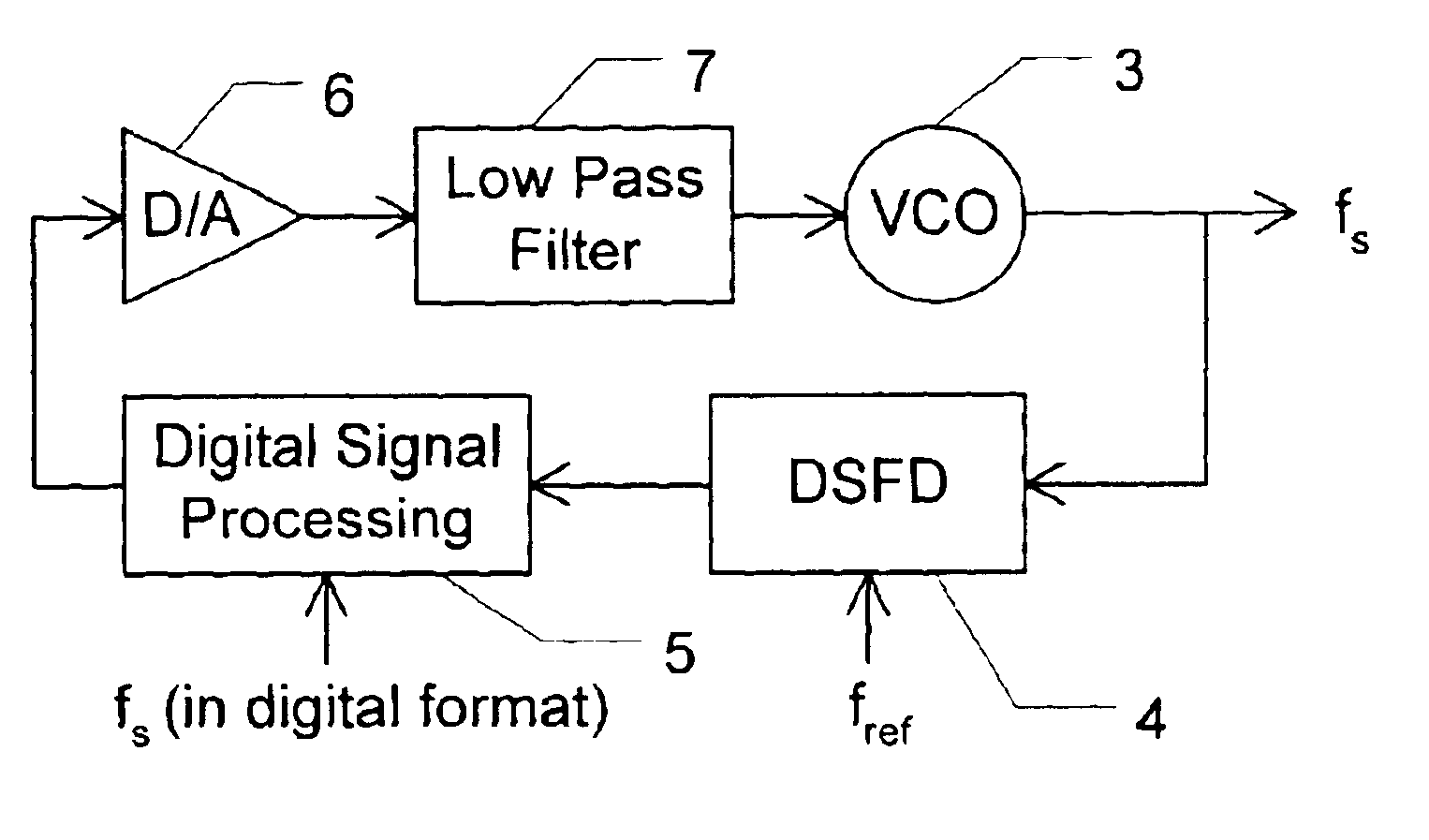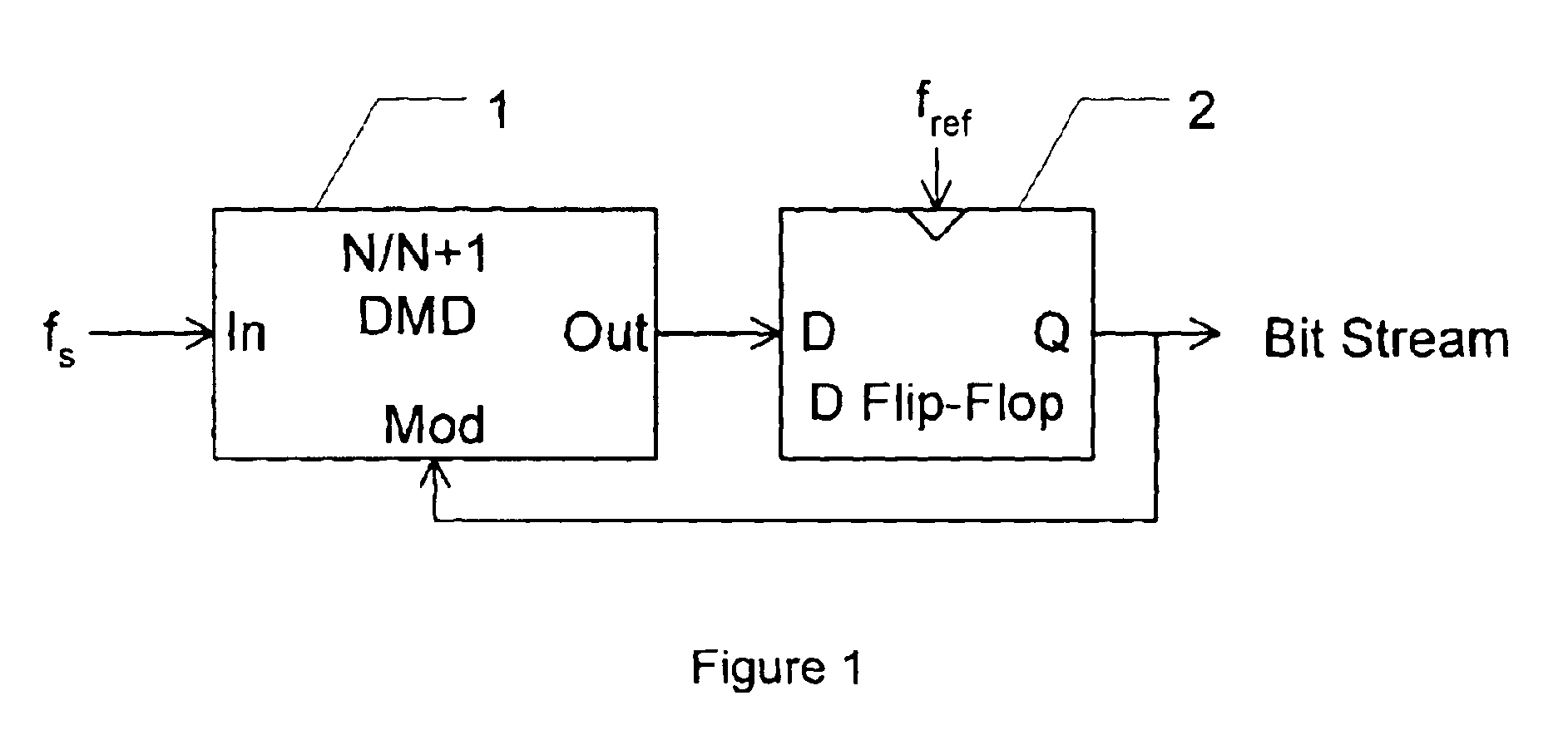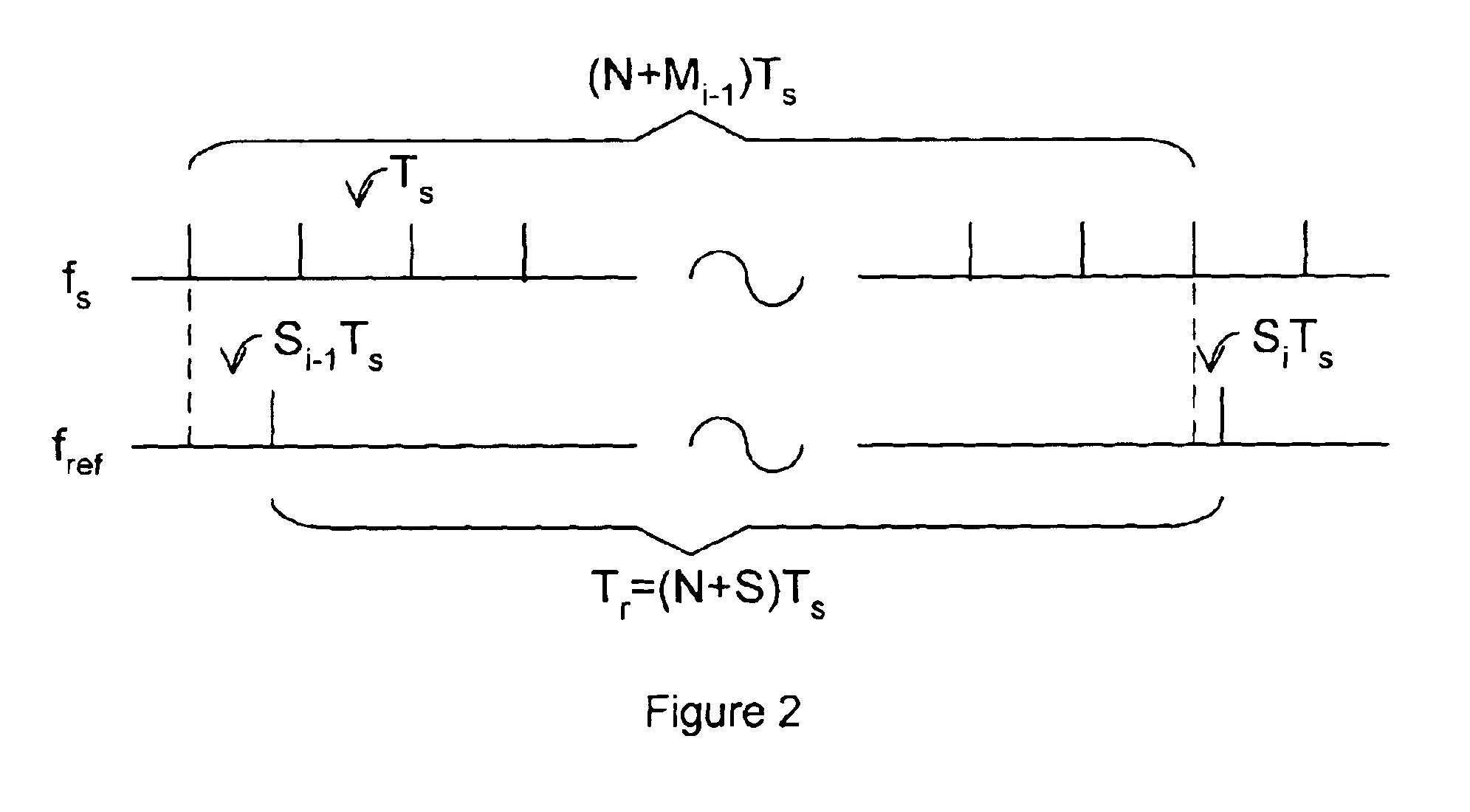Maximally digitized fractional-N frequency synthesizer and modulator with maximal fractional spurs removing
a fractional-n frequency synthesizer and modulator technology, applied in the field of fractional-n frequency synthesizers, can solve the problems of insufficient improvement, fractional spurs may still be a problem, and significant portion of analog circuits are still needed, and achieve high fractional spur suppression, and reduce the size of the dsfd.
- Summary
- Abstract
- Description
- Claims
- Application Information
AI Technical Summary
Benefits of technology
Problems solved by technology
Method used
Image
Examples
Embodiment Construction
[0024]It is useful to describe the DSFD in more detail for better understanding the present invention.
[0025]Refer to FIG. 1, if the up-transition from the output of the DMD comes before the reference transition, the output bit will be 1 and the next dividing ratio of the DMD will be set to N+1. On the other hand, if the up-transition from DMD comes after the reference transition, the output bit will be 0 and the next dividing ratio will be N.
[0026]Assume fs, the input frequency to the DSFD is:
fs=(N+S)fref0<S<1 (1)
where N is a positive integer, S is a fractional number, and fref is the reference frequency.
[0027]The formula could also be written as:
Tref=(N+S)Ts (2)
in which Tref and Ts are the cycle time for reference and input signal respectively.
[0028]FIG. 2 is the signal time diagram of the first order DSFD. Assume that at (i−1)'th reference transition the division ratio of the DMD is set to N+Mi−1 (Mi−1=0 or 1 which is the output bit of the DSFD). The sampling phase of the ref...
PUM
 Login to View More
Login to View More Abstract
Description
Claims
Application Information
 Login to View More
Login to View More - R&D
- Intellectual Property
- Life Sciences
- Materials
- Tech Scout
- Unparalleled Data Quality
- Higher Quality Content
- 60% Fewer Hallucinations
Browse by: Latest US Patents, China's latest patents, Technical Efficacy Thesaurus, Application Domain, Technology Topic, Popular Technical Reports.
© 2025 PatSnap. All rights reserved.Legal|Privacy policy|Modern Slavery Act Transparency Statement|Sitemap|About US| Contact US: help@patsnap.com



